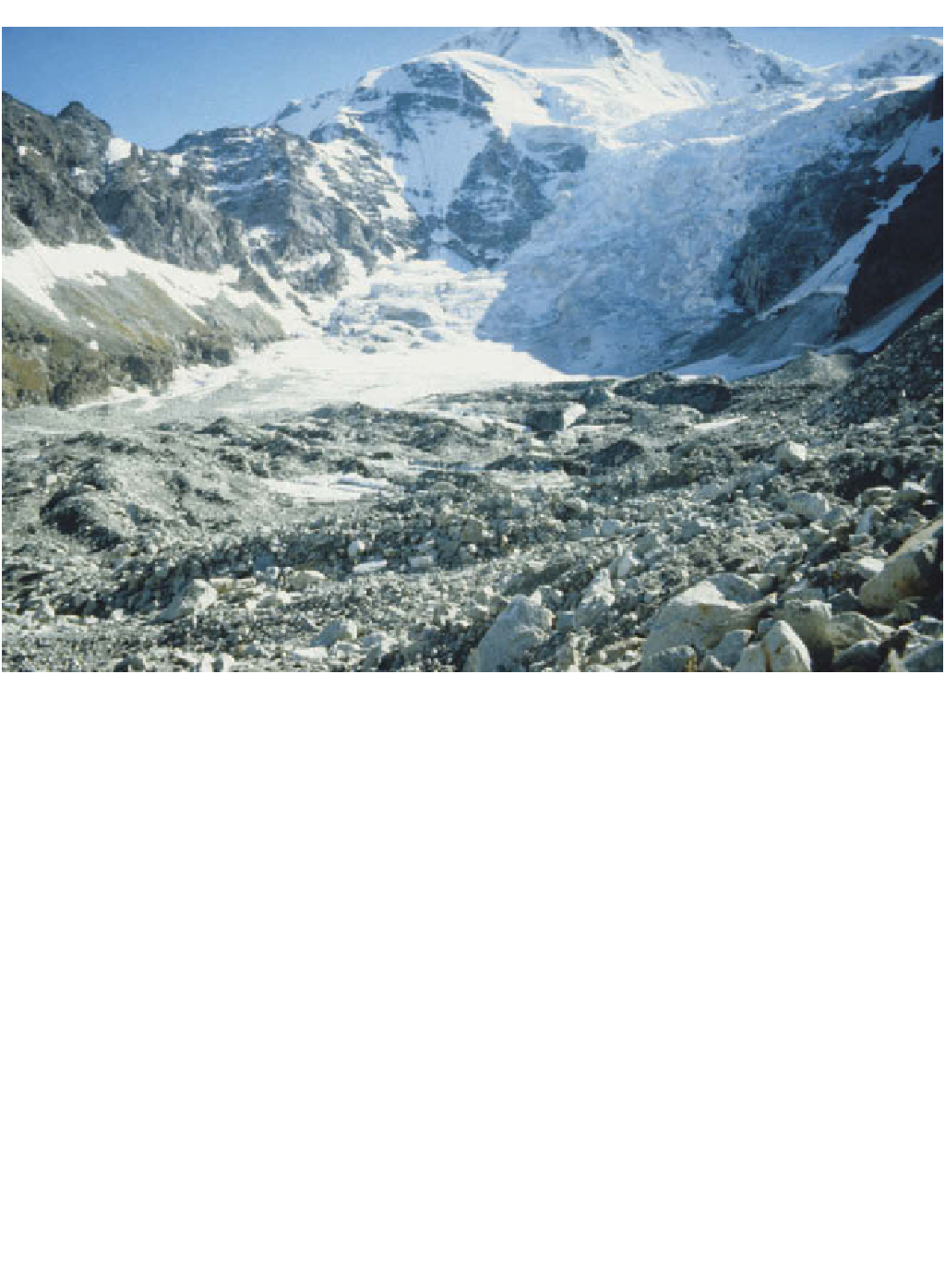Geoscience Reference
In-Depth Information
Plate 28.7
The unstable, unvegetated and mobile character of the paraglacial environment below a retreating alpine glacier,
south-western Switzerland.
Photo: Ken Addison
surface stability become more complicated when changes
in temperature, humidity and associated vegetation cover
are taken into account. Hill slopes that become less stable
through more frequent and higher precipitation, tending
towards deeper landslides, can also be stabilized by
summer aridity followed by intense storms, favouring
smaller, shallower slides (see
Chapter 13,
p. 304).
There are several obvious scenarios where ground and
slope failure is likely to increase as a direct result of climate
change, or indirectly through other processes affected by
some of the fastest Holocene climate changes and inter-
annual/decadal weather variability. Bank collapse and
increased channel erosion during river channel destabi-
lization can trigger larger-scale, shallow sliding in the
flood plain and adjacent river bluffs. In much the same
way, rising sea levels and higher, more frequent storm
surges will increase coastal landslide risk, especially in
softer rocks and sediments (
Plate 28.8
).
This could even
Ground instability and land degradation
In most cases, slope instability is triggered by changes in
other geomorphic systems which load, unload or undercut
slope materials and explains why we review them last.
We can extend this to include all forms of ground, whether
sloping or flat, as the geomorphic consequences of perma-
frost degradation make clear. Land surface instability
depends on critical increases in shear stress or decreases
in shear strength, either
in situ
or through external factors
(see
Chapter 13,
p. 303). Climate change alone can
increase
shear stress
in situ
through higher rainfall mass, or
decrease
shear strength by reducing cohesion, effective stress and
friction strength through changes in pore water pressure
and tension cracking through desiccation. Changes in
rainfall regime (especially intensity and periodicity) can
adversely alter hydraulic conductivity and the position of
local/perched water tables in soils and other unconsoli-
dated slope materials. Geotechnical properties and land








































